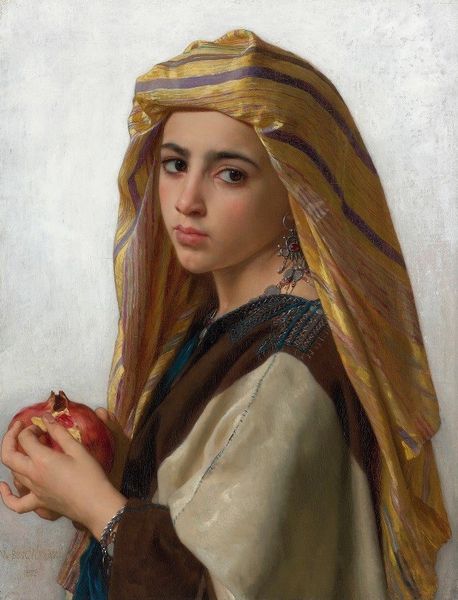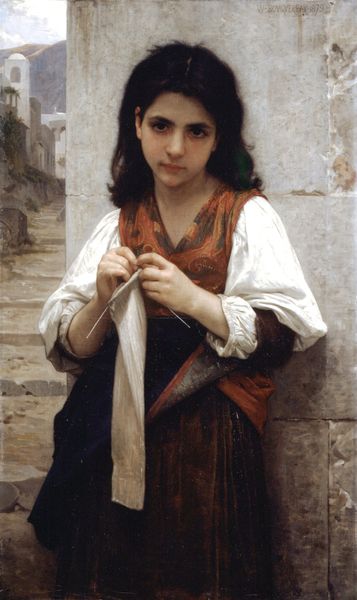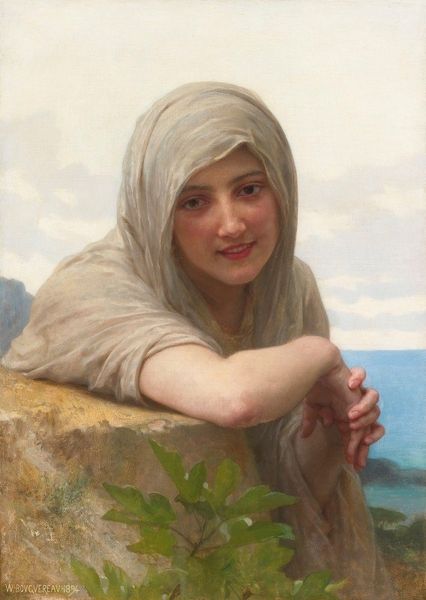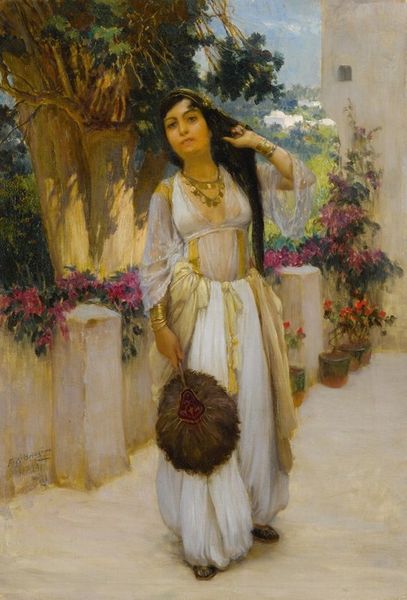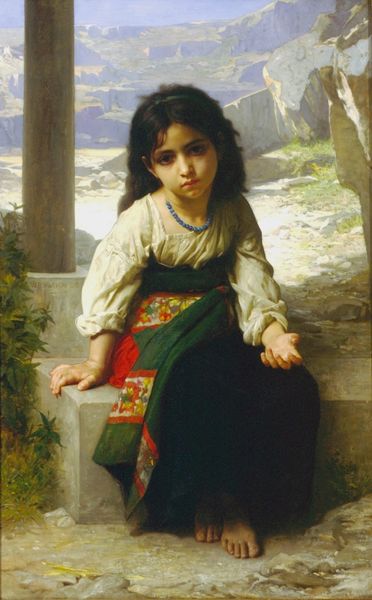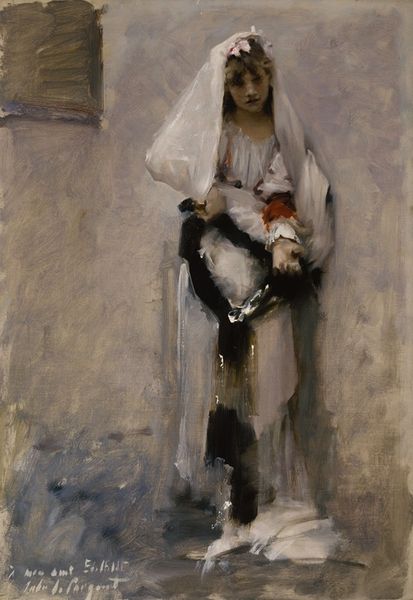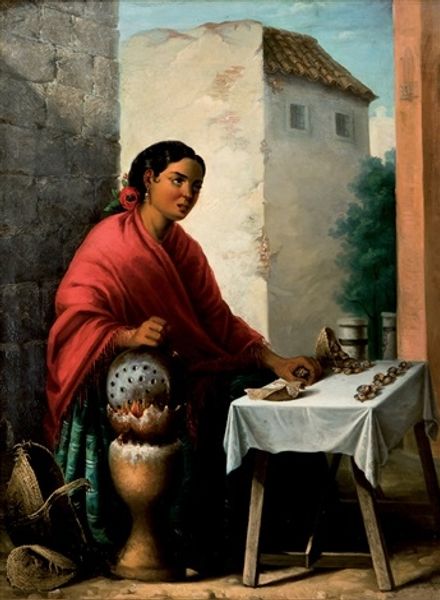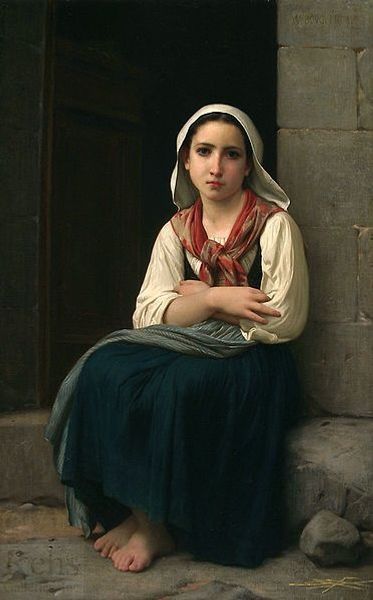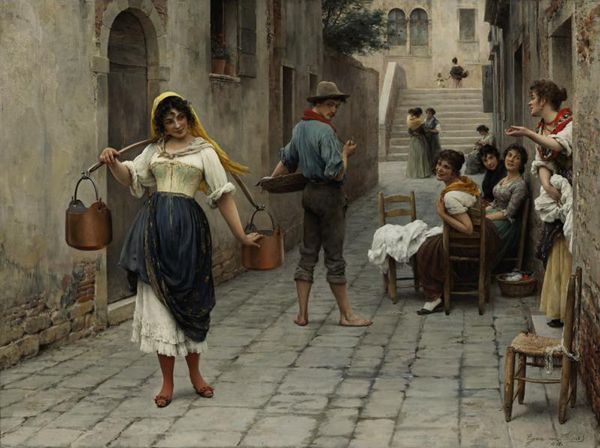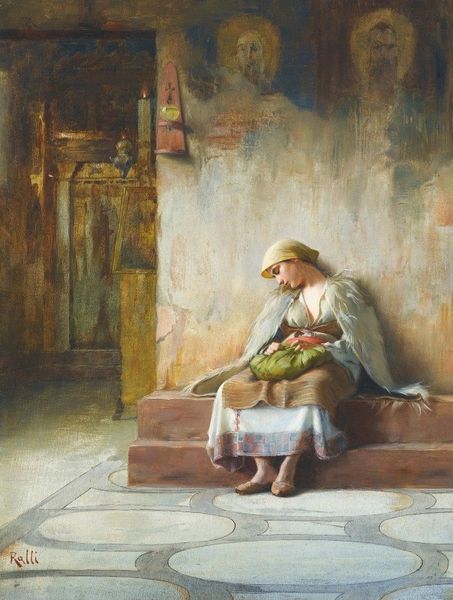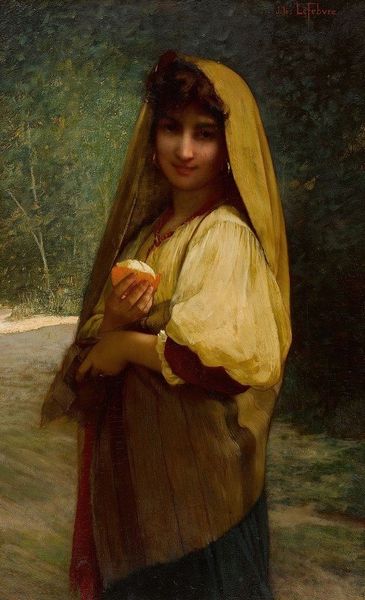
Dimensions: 115.6 x 88.9 cm
Copyright: Public domain
Editor: So, this is William Bouguereau’s “The Pomegranate Seller,” painted in 1875. The girl's direct gaze and the still life of the pomegranates draw me in. What do you see in it? Curator: I see a fascinating document of 19th-century artistic labor and Orientalist consumption. Consider the materiality of the oil paint, mimicking skin and fruit with uncanny precision. The basket itself speaks to the craft traditions appropriated and commodified. What does it mean to produce such an image of a vendor in this period? Editor: It's like the painting itself is an object for consumption, not just depicting the sale of pomegranates. What about Bouguereau’s technique? How does that connect? Curator: Precisely. His academic realism, highly valued at the time, reflects a certain industrial efficiency. Bouguereau mass-produced technically proficient works, catering to the desires of the European bourgeois. This wasn’t some spontaneous burst of creativity; it was calculated production within a market-driven system. Is it portraiture or a social document? Editor: So, you are saying it is more than just Romantic painting? Curator: It's not only a romantic idealization but also part of a larger system. It brings attention to issues of social class. Editor: That is true; thinking of the artist's involvement with society adds more layers. Thanks for pointing it out. Curator: It pushes beyond sentimental analysis. Next time we look, perhaps, we will also have the opportunity to consider what these production systems reveal in today’s world.
Comments
No comments
Be the first to comment and join the conversation on the ultimate creative platform.
